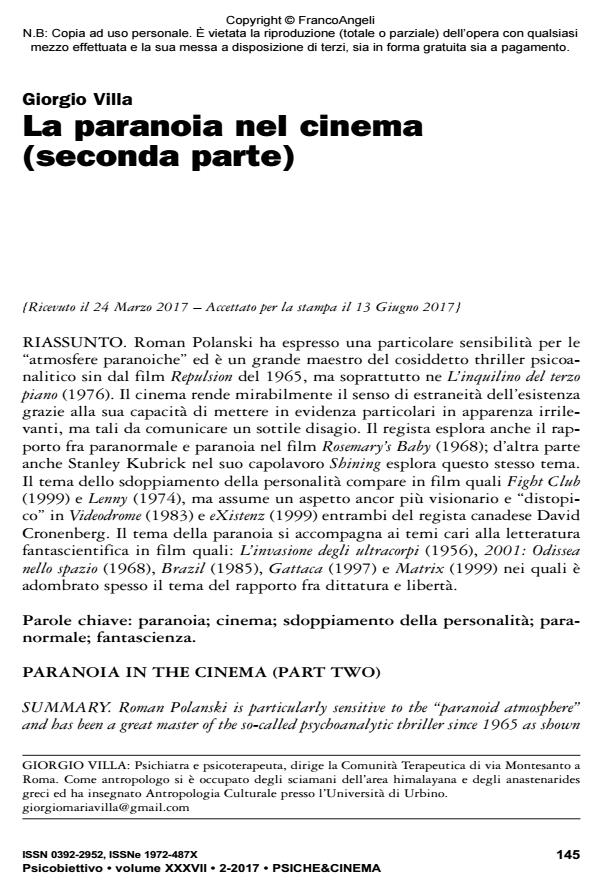Paranoia in the cinema (part two)
Journal title PSICOBIETTIVO
Author/s Giorgio Villa
Publishing Year 2017 Issue 2017/2
Language Italian Pages 10 P. 145-154 File size 104 KB
DOI 10.3280/PSOB2017-002011
DOI is like a bar code for intellectual property: to have more infomation
click here
Below, you can see the article first page
If you want to buy this article in PDF format, you can do it, following the instructions to buy download credits

FrancoAngeli is member of Publishers International Linking Association, Inc (PILA), a not-for-profit association which run the CrossRef service enabling links to and from online scholarly content.
Roman Polanski is particularly sensitive to the "paranoid atmosphere" and has been a great master of the so-called psychoanalytic thriller since 1965 as shown by the movie Repulsion, but mostly visible in his Third-Floor Tenant movie (1976). The film industry can transmit the sense of strangeness of existence admirably due to its ability to bring out details that may appear irrelevant, but that communicate a profound discomfort. The film director also explores the relationship between paranormal and paranoia in the movie Rosemary’s Baby (1968); Stanley Kubrick in his masterpiece The Shining explores this theme as well. The subject of split personality appears in films such as Fight Club (1999) and Lenny (1974), but it takes on a more visionary and "dystopian" nature in Videodrome (1983) and eXistenz (1999) both directed by the Canadian David Cronenberg. Paranoia is accompanied by themes that are dear to science fiction films such as Invasion of the Body Snatchers (1956), 2001: A Space Odyssey (1968), Brazil (1985), Gattaca (1997) and The Matrix (1999). In these movies, the theme of the relationship between dictatorship and freedom is often shadowed.
Keywords: Cinema; Split Personality; Paranormal; Science Fiction.
Giorgio Villa, La paranoia nel cinema (seconda parte) in "PSICOBIETTIVO" 2/2017, pp 145-154, DOI: 10.3280/PSOB2017-002011